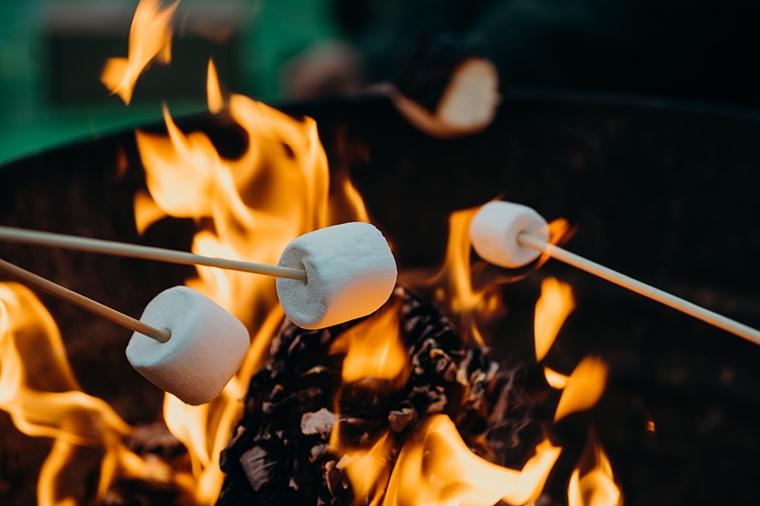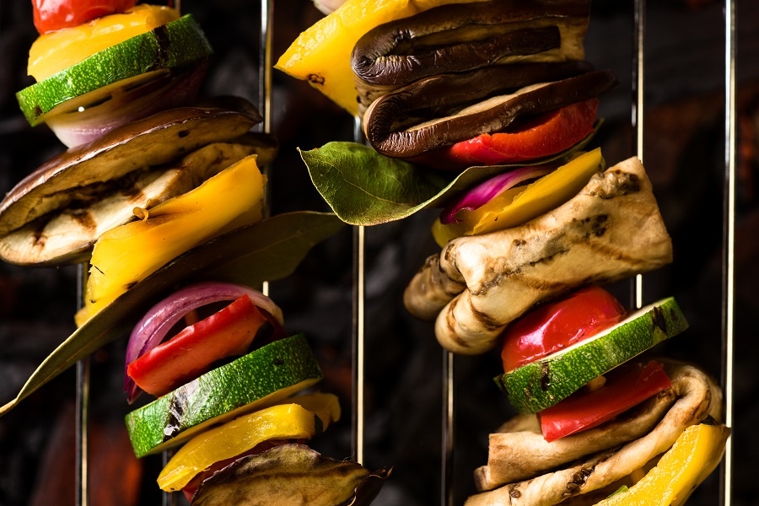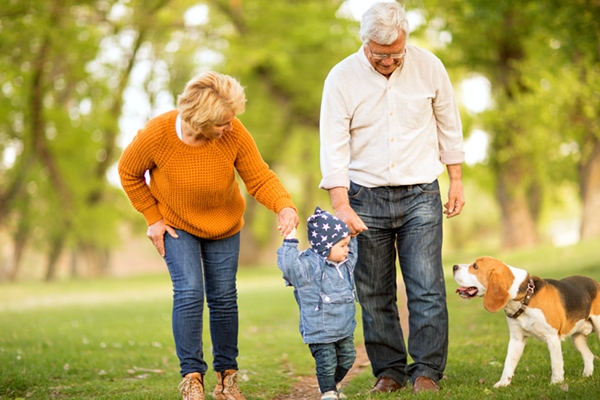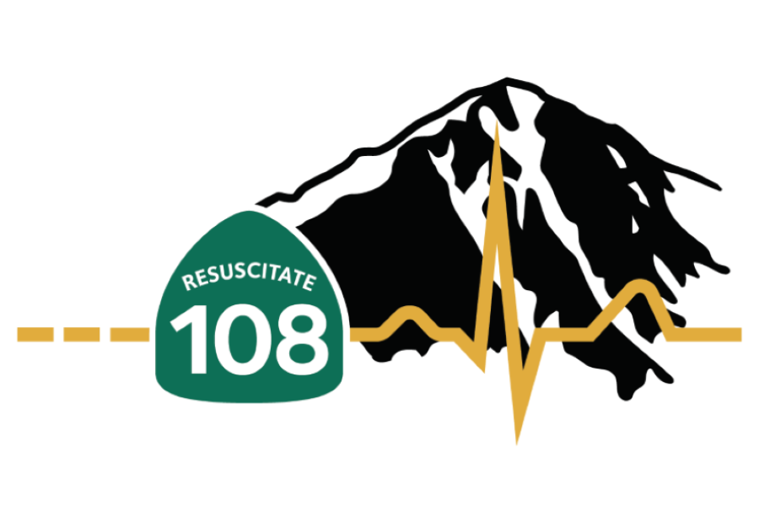Burn safety tips for summer
Jun 18, 2022

As you swap out your raincoat for a tank top, Adventist Health's emergency room has some pointers to keep you and your family safe from burns this season. Damage to the skin caused by the sun, grilling accidents, fireworks, and campfires is all too common this time of year.
Depending on the severity of the burn, you may be able to treat it on your own with over-the-counter medicines and burn creams. Other more serious burns could mean a trip to urgent care or the emergency room.
"Summer is a time when a lot of people — kids and adults — come to the emergency room with severe sunburns and accidents from campfires and cooking,” saysDr. Marcus Chiodo, an ER physician at Adventist Health Portland. "By making safety a top priority and taking a few key steps to keep you and your family safe, burn accidents can be prevented.”
As the sun burns through the marine layer and camping spots are reserved, safety should be a top priority for a fun summer.
Grilling guidelines for a tasty — and safe — barbecue
Summer block parties and barbecues present the chance to show off your grilling skills to the entire neighborhood. They're also busy and full of distractions. It's easy to take your eyes off the grill, which could put you, a family member or pet in danger.
As you heat up the briquettes, remember these barbecuing safety tips before you put the kebabs on:
- If you're using a propane barbecue, check the tank hose for potential leaks.
- Only grill on stable ground a safe distance away from the house or other structures.
- Keep the grill clean to avoid grease buildup that can lead to flare-ups and fires.
- Never leave the barbecues unattended.
- Keep kids and pets at a distance so they don't accidentally burn themselves
Avoiding campfire catastrophes
No camping trip feels complete without a campfire and s'mores. But with fire comes risk. The best campfire circles are the ones that are safe. Here are some things to keep in mind around the fire:
- Contain your campfire in a stone or metal fire pit away from grass, bushes, and trees with low-hanging limbs.
- Keep flammable items away from the fire.
- Keep water nearby in case a gust of wind or another trigger causes the fire to grow too large.
- Check for campfire restrictions before igniting the flame. Illegal campfires carry a steep fine because they can lead to dangerous forest fires.
- Avoid inhaling dangerous campfire smoke.
Sunburn safety for summer and beyond
The sun reaches its peak intensity between 11 a.m. and 4 p.m. and can be dangerous if you don't take precaution. You can take simple steps to protect yourself and your family from dangerous sun rays and to prevent sunburns:
- Avoid staying in the sun for hours on end. Look for shade or bring a beach umbrella.
- If you must go into the sun, regularly apply sunscreen with at least SPF 15. Remember it takes 20 to 30 minutes for sunscreen to activate once applied. Your lips and ears are particularly sensitive to sunburn, so don't forget to coat them too.
- Tops of heads and even eyes get sunburned too. Wear a hat and protective sunglasses.
- Remember to drink enough water.
If you do get burned, apply fresh aloe vera to ease the pain.
Categorizing burns
If the worst happens and you do get burned, it’s important you know how to evaluate the burn so it gets the treatment it needs.
![]()
First-degree burn:As is the case with a mild sunburn, the burn site is red, painful, dry and free of blisters. It usually takes seven to 10 days to heal.
Second-degree burn: The burn extends beyond the top layer of skin, causing blisters that can become infected if popped. Second-degree burns usually take two to three weeks to heal.
Third-degree burn:Symptoms vary but include a waxy/white color, char and/or a dark brown color. These burns also have undeveloped blisters and raised, leathery skin. These burns do not have a set timeline for healing and often result in scarring.
Urgent care vs. ER: Where to get burn treatment
Minor burns that can't be treated at home and are more than 2 inches wide should be seen by an urgent care provider. That includes painful sunburns and burns from flames or hot pan that can lead to blistering.Find your nearest Adventist Heath Portland urgent care.
For more serious burns that can be debilitating — particularly burns to the face, eyes, ears, hands, feet or genitals — go to the emergency room immediately for treatment. Depending on the size of the burn, where it's located, how deep the burn goes and if it's infected,going to the ERmay be the best decision for treatment. If you are experiencing an emergency, call 911.
All burns aren’t created equal, and it may be hard to decide what type you have. "If you have doubt about your burn, it’s better to get it checked out by a medical provider,” says Dr. Chiodo. “Burns that get infected and go untreated can be dangerous, even life-threatening.”
If a burn or any other accident is potentially life-threatening, call 911 immediately.
Common burn mistakes to avoid
Running the burn under cold water for too short of time:A minute or two under cold water is not enough. To help heal the wound and ease the pain, run a burn under cold water for 10 to 15 minutes and then apply a damp/cool towel over the area
Popping blisters:While it can be tempting, popping blisters on your own can expose you to infection. It's better to let them heal on their own and through the use of medicine. If you believe a blister must be popped, visit your medical care provider for treatment.
Relying on a "base suntan" to prevent burning:Spending time in a tanning bed to get a base tan is a bad idea. The human body cannot protect itself effectively from UV rays in tanning beds. Estimates show that tanning beds lead to 419,000 cases of skin cancer in the U.S. each year. According to Skin Cancer Foundation, more people develop skin cancer because of tanning than develop lung cancer because of smoking.
Skipping sunscreen:Just because it's cloudy doesn't mean you shouldn't wear sunscreen. UV rays still penetrate clouds and can lead to a sunburn. Oregon, known for its rain and clouds, has the fifth highest melanoma rate in the country. “Also keep in mind that even in the cooler temperatures of the Cascades, you're catching a lot of rays at high elevation," reminds Dr. Chiodo.
Relying on old-fashioned home remedies:Home remedies are often ineffective and can actually prevent burns and other wounds from healing. Butter is best left on the corn cob and Vaseline left in the cupboard. Grease will actually contain the heat and slow the healing process. Vinegar, bleach and cold meat should also be avoided.
Letting your tetanus shots get out of date:Minor and major burns can lead to tetanus, so talk with your provider now to see if you should get a booster shot to protect yourself. Take the steps necessary to protect yourself before a burn happens.
Ready, set, fire!
We think you're ready. Fire up the grill and get out the marshmallows. “Sunshine and fires are fun parts of summer if you keep burns at bay,” says Dr. Chiodo.
And if the worst should happen, Adventist Health Portland’surgent care clinicsandERare ready to give you and your burn the quick, compassionate care you both deserve.


